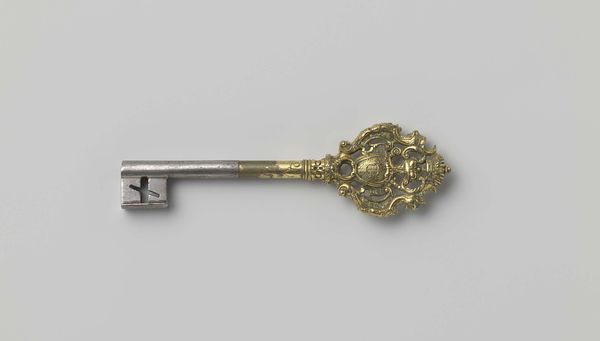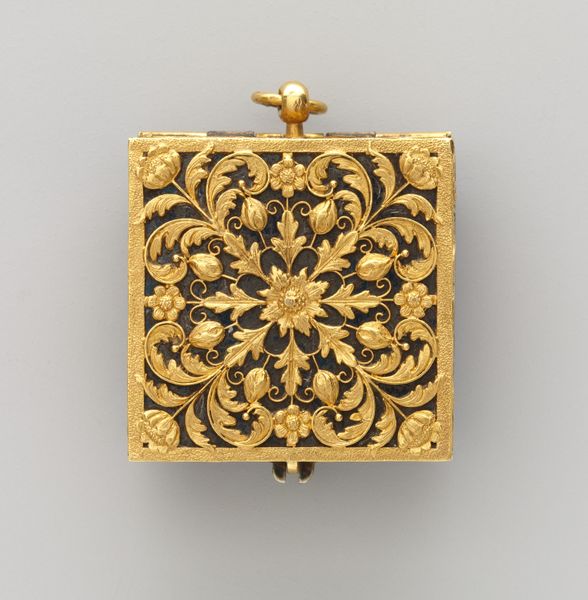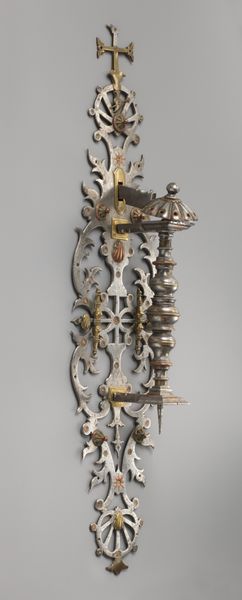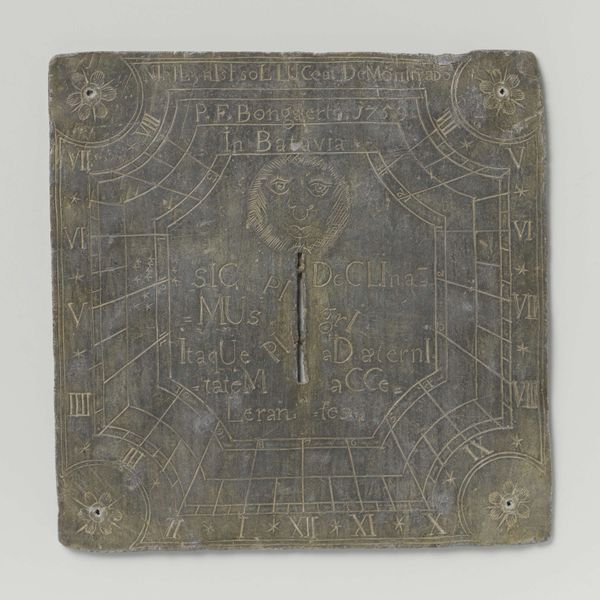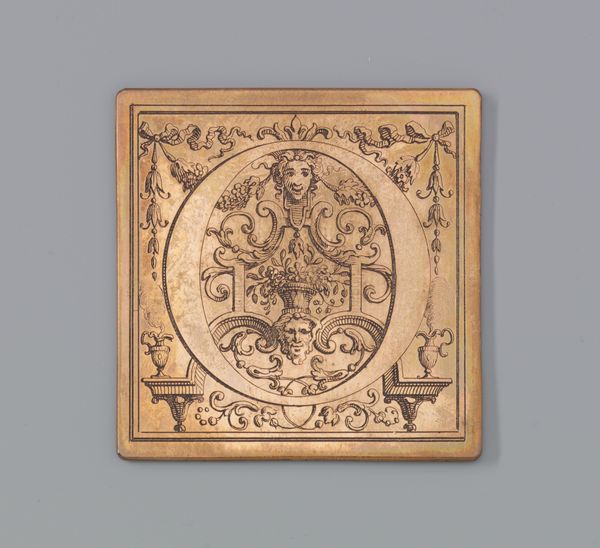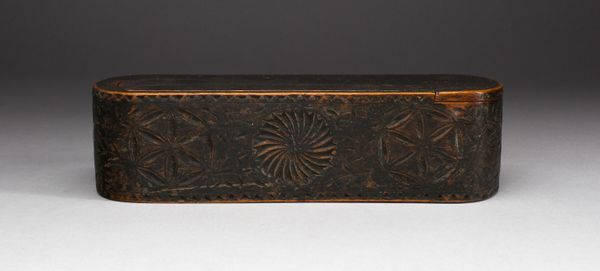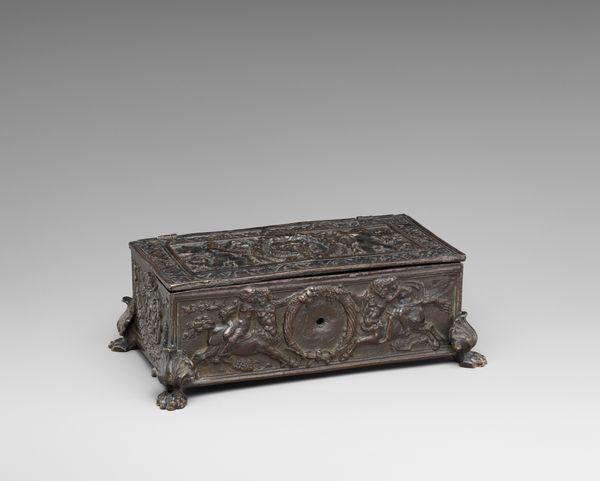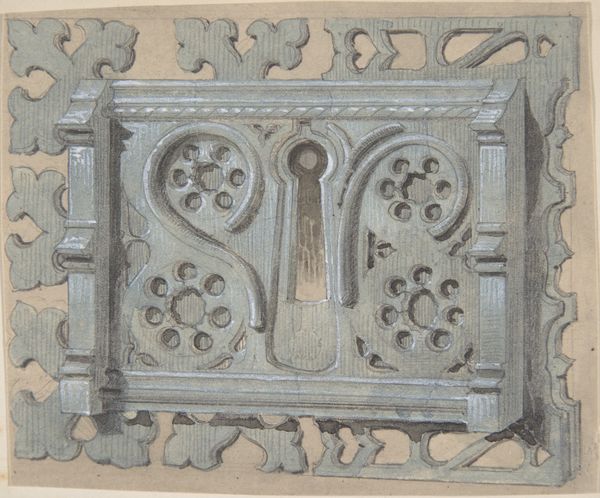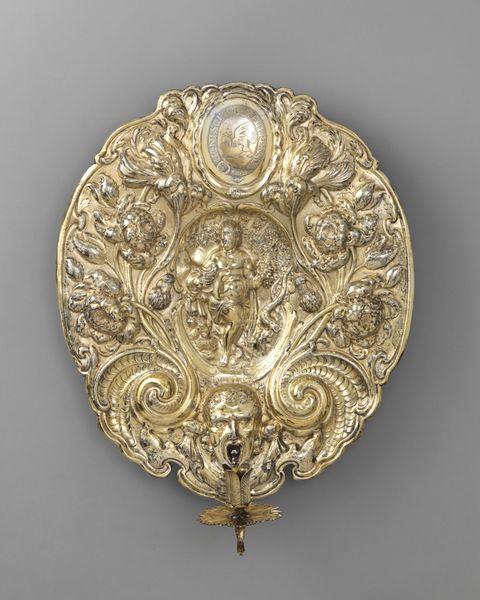
carving, metal, sculpture
#
carving
#
baroque
#
metal
#
sculpture
#
sculpture
#
decorative-art
Dimensions: Overall (lock, .8a): 4 7/8 × 5 5/8 × 1 1/2 in. (12.4 × 14.3 × 3.8 cm); Length (key, .8b): 4 11/16 in. (11.9 cm)
Copyright: Public Domain
Curator: Take a look at this ornamental lock, believed to be made in the 17th century. The piece, rendered from metal and embellished with delicate carvings, is now housed at the Metropolitan Museum of Art. Editor: My first impression is of remarkable precision. The composition feels both decorative and deeply symbolic, with that contrasting texture offering visual delight. Curator: Indeed, in the context of Baroque aesthetics, locks transcended mere utility, becoming symbols of power and security, safeguarding not only material wealth but also status. What about its cultural symbolism intrigues you? Editor: It is so obviously a “Tree of Life” motif, sprouting from what appears to be a vase and inhabited by those curious birds or winged creatures—perhaps evoking protection of the household or private space. Locks were like potent protective devices for spaces people considered worthy of this extra attention. The key almost resembles a delicate flower itself. Curator: Notice the details, particularly within the borders. These choices in design and the construction and relationship with the floral pattern add complexity to our reading of it, it isn’t just ornamentation for decoration’s sake. This artwork suggests protection from some dangers, maybe real or imagined! Editor: Yes, observe the intricate interplay between positive and negative space, the carving giving the flowers volume without excessive depth and retaining that two-dimensional surface… This all helps bring an overall visual unity. I appreciate that despite its small scale, it commands attention. Curator: And perhaps invites us to ponder about the emotional value we assign to personal boundaries, tangible or conceptual! Editor: Very well! What an intricate microcosm of the 17th century! A captivating artifact!
Comments
No comments
Be the first to comment and join the conversation on the ultimate creative platform.

